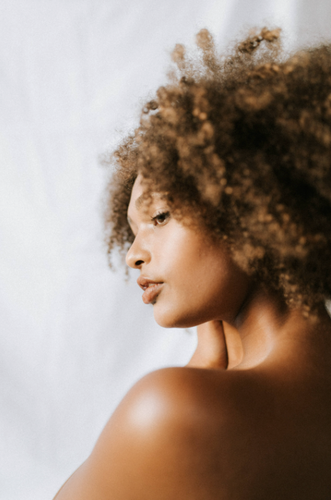When it comes to skin care, order is of the utmost importance, and order especially matters when you boost your regimen with face oil. If you’re wondering how and when to apply face oil, we’ve got the answers. Ahead, we cover how to use face oil to harness its beautifying botanical benefits.
What Is Face Oil?
Moisturizer is a must in any skincare routine, but face oil can give your skin extra love. Face oil is what it sounds like: it’s a blend of botanical oils that help further moisturize your skin. It acts as an occlusive, sealing in hydration to keep skin nice and supple.
Benefits of Face Oil
Face oil will help you lock in hydration and may help to protect your skin from environmental stressors. When used correctly, it helps skin retain moisture, especially if you live somewhere with low humidity. Plus, it can help give your face a radiant glow. And yes, even those with oily or combination skin can benefit from hydrating face oils!
Best Ingredients in Face Oil
Face oils are made up of different botanical ingredients, many rich in fatty acids and vitamin E. Here are some of the best botanically-based ingredients to look for:
- Jojoba oil: Similar to the skin’s sebum, this seed oil helps minimize excess oil and restore moisture.
- Manuka oil: Taken from the foliage of the manuka tree, this oil gently soothes skin irritation.
- Moringa oil: Rich in vitamins, antioxidants and fatty acids, this oil comes from the “tree of life” and is one of the most nutrient-rich oils.
- Rosehip oil: Abundant with rejuvenating fatty acids and vitamin C, rosehip oil comes from rose seeds.
- Marula oil: This oil is taken from the marula tree fruit, soothing irritation while delivering antioxidants.
- Tea tree oil: Derived from the tea tree shrub, tea tree oil touts cleansing and clarifying properties.
Also, consider ingredients by skin type. Oily skin can benefit from jojoba oil, which is nourishing but non-greasy. If you have combination skin, jojoba oil helps balance skin moisture, delivering hydration to dry spots without clogging up pores. For dry skin, rosehip and moringa oil bring a burst of hydrating essential fatty acids.
How to Properly Use Face Oils
Because pure face oils are heavy, they’re one of the last things you put on your face in your skincare regimen. There’s an optimal time to use face oil: Use it after cleansing your face, ideally at night, because face oil may affect the efficacy of SPF products. If you’re wondering how to layer your skin care, start with the thinnest formulas first to give skincare products a chance to absorb into the skin. After cleansing your face, follow up with toner, water-based serums (think: hyaluronic acid and vitamin C serums) and creams (an emulsion of water and oil).
If you’re using an oil like tea tree oil as a spot treatment for blemishes or other skin imperfections, you can use it right after cleansing your skin and before moisturizing. You can apply a ready-to-use product such as our Desert Essence Blemish Touch Stick, or use one drop of pure tea tree oil on a wet cotton pad—you always want to dilute pure tea tree oil with water or a carrier oil.
How Much Face Oil Should You Use?
Less is more with face oils. Some people apply oil all across their faces and necks, but you can also target dry patches. Either way, one to three drops of face oil should suffice. Apply it on top of your moisturizer or mix a few drops into your moisturizer.
Desert Essence Face Oils
For botanically-powered radiance, shop Desert Essence face oils to boost your skincare routine. Here are our favorite face oils and their nourishing ingredients.
- Desert Essence Pure Jojoba Oil: Jojoba oil cleanses and moisturizes your face without feeling oily — it’s also an excellent multitasker for your hair and scalp.
- Desert Essence Kinder to Skin Manuka Oil & Tea Tree Oil: This diluted tea tree oil solution gently cleanses skin and soothes blemishes.
- Desert Essence Balancing Face Oil: Great for oily or combination skin, this formula blends organic jojoba, pomegranate and lavender oils for lightweight moisture that doesn’t clog up pores.
- Desert Essence Restorative Face Oil: Restore radiance to dry or mature skin with a formula that combines organic evening primrose, marula and jojoba oils for penetrating moisture and protective antioxidants.
